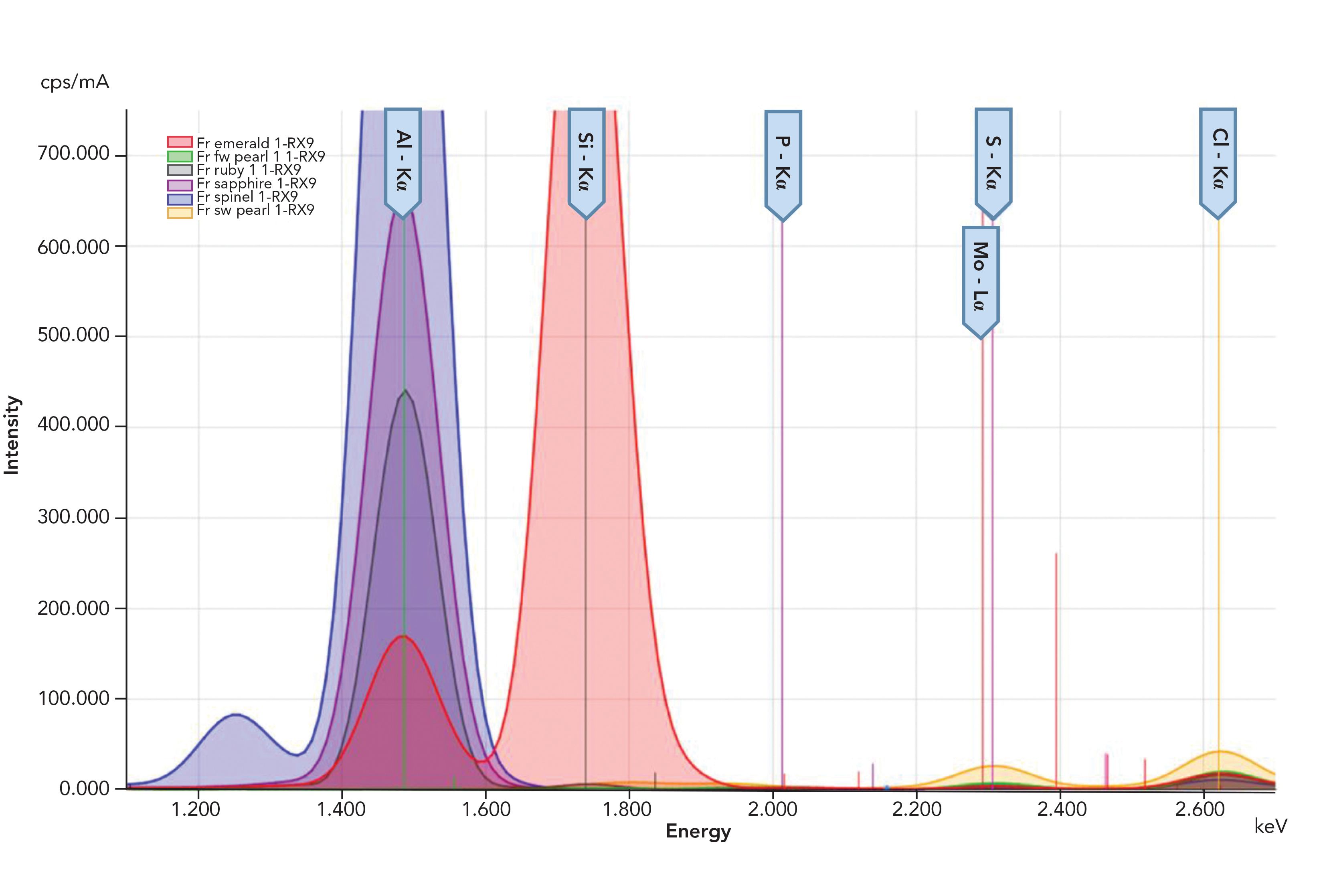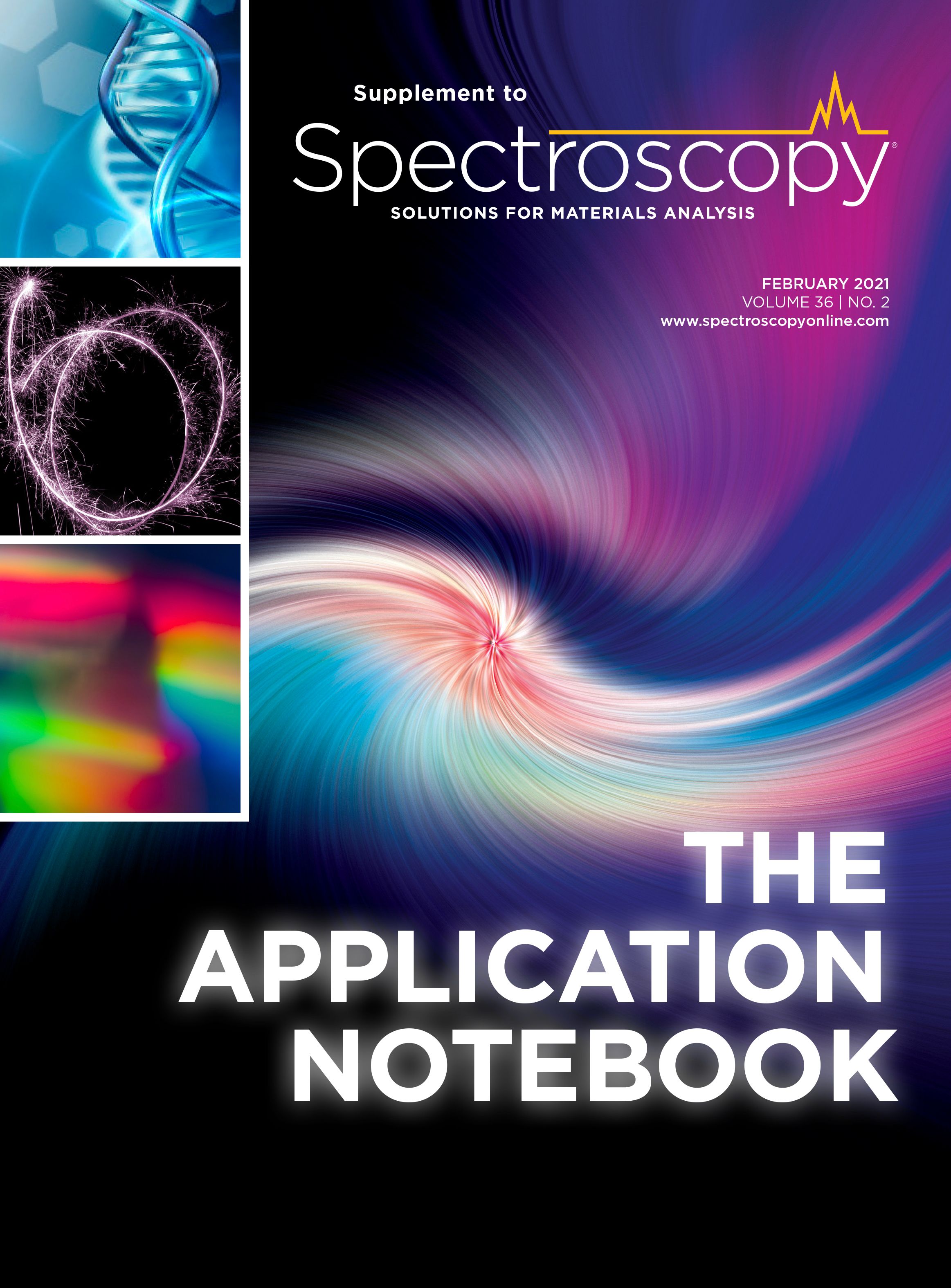Analysis of Gemstones Using EDXRF

Elemental measurement is important in gemology for identification, classification, and characterization of both natural and synthetic gemstones. Minor and trace levels of metals, especially the transition metals, as well as alkali elements and alkaline earth elements, help to establish the geographic region and environmental conditions during the formation of a gemstone. Other elements can be used to indicate processing requirements of synthetics.
EDXRF (Energy-dispersive X-ray fluorescence) is a simple, non-contact, non-destructive analysis technique that is ideal for use in precious materials testing. It is useful in quantifying the elements that occur in many gem materials, as well as other elements that are evidence of certain treatment processes. The benefit of using low power 50W EDXRF is that the X-ray source will not damage the gems. Secondary targets and polarization also make the analysis simple by eliminating most or all of the extraneous background scatter X-rays.
Experimental Conditions
Each gemstone was placed in a small plastic XRF sample cup using a special insert made of Teflon to center the stone sample and provide no extraneous fluorescence.
A fundamental parameters (FP) method was developed from Rigaku’s RPF-SQX Metals Template. The RPF-SQX method uses an advanced FP program that automatically deconvolutes spectral peaks and models the sample matrix using fundamental XRF equations. This provides an estimate of the percentage of the sample that cannot be measured and yields more accurate analytical results for the remaining elements that can be measured, affording a semi-quantitative measurement of elemental concentrations without the need for a large suite of known assayed calibration standards. A matrix-specific matching library can be created using one assayed sample of each gemstone to further optimize analytical results.
Figure 1: RX9 (HOPG polarizer) secondary target

Instrumentation
Model: Rigaku NEX CG
X-ray tube: 50 W Pd-anode
Excitation: Indirect with polarization
Detector: High-performance SDD
Analysis Time: 500 s
Environment: Helium Purge
Standard: 15-position Sample Tray (32 mm)
Options: Teflon sample cup insert
Results
The Rigaku NEX CG spectrometer combines indirect excitation with secondary targets, polarization targets and a high-performance SDD to give the operator a powerful and versatile analysis tool with a very simple to operate software interface. In contrast to conventional EDXRF systems, indirect excitation removes virtually all the background and thus affords spectra with a very high characteristic signal-to-noise ratio. This allows for much lower detection limits and a higher degree of accuracy.
The results shown here use standardless analysis and indicate excellent performance without the use of a Matching Library.
Conclusion
The Rigaku NEX CG analyzer using the RPF-SQX fundamental parameters method yields excellent performance for the elemental analysis of gemstones. Indirect excitation and polarization give the gemologist an excellent low-background tool, and low 50 W power ensures no damage to the gemstone during analysis. The use of RPF-SQX eliminates the need for calibration standards, and, if desired, quantification can be optimized with matching libraries based on one assayed sample of each gemstone.
Applied Rigaku Technologies , Inc.
9825 Spectrum Drive, Bldg. 4, Suite 475, Austin, TX 78717
Tel. (+1) 512-225-1796
Website: www.RigakuEDXRF.com.
